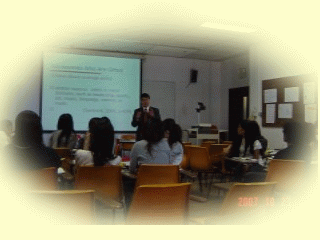
Home > Contents > Session Nine
Session Nine: Prevention of adolescent problems
How might teachers prevent school-related adolescent problems? - Understanding adolescents with problems
- A whole school approach
- Invitational education
- Counselling skills and teachers
- Interdisciplinary collaboration in supporting adolescents with problems
![]()
At end of the session, the participants will be able to: |
Task: Hikikomori: Case study and Trend of spreading in Hong Kong (see above)
Example: (The task below is just selected from those tasks assigned in the Learning Guides.)
Case 1: A 17-year-old Japanese boy, John (pseudonym) suffers from a social disorder known in Japan as hikikomori, which Three years ago, a classmate taunted him with anonymous hate letters and scrawled abusive graffiti about him in the The family responded passively and softly as everybody says give it time, it's a phase or he'll grow out of it. His mother One psychologist has described the condition as an "epidemic", which now claims more than a million sufferers in their (Source: BBC news; Japan: The Missing Million:, 20/10/2002) http://news.bbc.co.uk/2/hi/programmes/correspondent/2334893.stm Case 2: The number of young people who spend their lives locked in their bedrooms has tripled in the past two years to as many In Hong Kong, the welfare group warned the latest figure was only the tip of the iceberg because most cases did not come From the cases that the group handled, some had isolated themselves for as long as six years, with the youngest being just Characterised by their lack of self-esteem and self-confidence, these young people usually did not perform well at school, (Source: South China Morning Post, 15/1/2007) |
Please answer these questions:
- Imagine you are a class teacher of a boy who suffers from "hikikomori" and skip classes for three months. Please apply
the theories you have learned and prepare a plan to help the boy to re-enter the school life? - Explain your expected outcomes; and justify the rationale in your intervention plan.
References (see above)
Optional Web-based Activities and Videos
Watch:
Invitational Education
Videotape E371.3 I62
Mr. Holland's opus [videorecording] E 791.43 M93 h
Dangerous minds [videorecording] E 791.43 D18 m
Read :
Choice theory
http://www.wglasser.com/whatisct.htm
School violence from the perspective
of William Glasser
http://www.wglasser.com/violence.htm
Creating safe school through
invitational education
http://chiron.valdosta.edu/whuitt/files/createsafeschools.html
Further readings:
